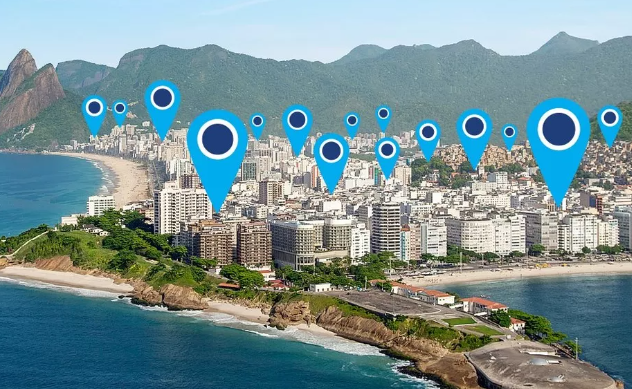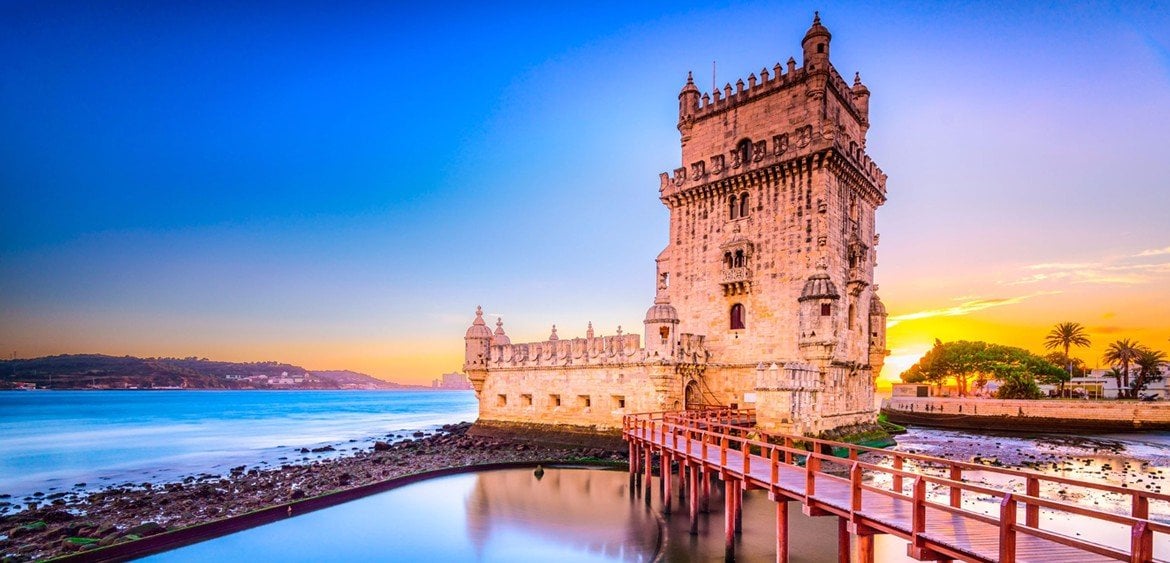Brazil
Itinerary for the main tourist attractions in Sabará
The city of Sabará, in Minas Gerais, was founded in 1675, as a town, after a group of bandeirantes arrived in this region, with the intention of making fame and fortune, while what many others did was misery, at the time of the gold rush, which took hold in this region during this period.
Advertisement
The city of Sabará, in Minas Gerais, was founded in 1675, as a town, after a group of bandeirantes arrived in this region, with the intention of making fame and fortune, while what many others did was misery, at the time of the gold rush, which took hold in this region during this period.
It was also known as Sabarabuçu and was only recognized as a city in 1838, becoming a very attractive destination for tourists to explore all its streets and architecture that have been preserved since the colonial period, as this will be a journey considered to be geographical and very temporal, with its mansions, churches, squares and its historic center.
Sabará is very close to Minas Gerais and Belo Horizonte, with no more than 25 km between the two and for tourists, this is very good, as it allows for planning that will be very beneficial for putting together your travel itinerary. trips. Cachaça, cheese bread and other delicacies can be found on your table on this delicious and historic trip.

Best time to go to Sabará
In the summer it is hot, with rain and in the cold seasons the climate is dry. Therefore, there is no best time to visit this region and any day of the year can be suitable for this trip, depending only on the expectations and planning carried out by each traveler. It is a region that receives many visitors at all times of the year.
The historic churches
There are many churches in Sabará that are of great historical importance and have beautiful architecture, with many details that are in baroque, giving a beautiful look to the entire facade of their buildings. The Church of Nossa Senhora do Ó is a simple chapel, with baroque details, with arches and columns that are decorated with dragons and a painting of the Baby Jesus, which is inspired by Judaism.

The Church of Nossa Senhora do Carmo in Sabará also holds a lot of history and with master Aleijadinho responsible for much of it. Some of these works are the rosewood balustrade, with many images of Saint Simon, Stock and Saint John of the Cross, to name a few, and even a set of choirs, which may be worth a dedicated exploration to see all the details of their art. .
The Church of Nossa Senhora do Rosário dos Pretos on the outside, there are some ruins, which give a charm of works that are unfinished that this church hides, inside what is an old chapel that is made of mud, from the year 1713. There, the Museum of Sacred Art is also hidden, which is full of religious items from the 18th and 19th centuries.

Finally, don't miss the Igreja Matriz de Nossa Senhora da Conceição, which is an influence from Italy or a style that is national, with the baroque being present in all the ornamentation of this church, with many tones that are golden and which are located around its altar, which has thick columns and its bastiimal font, which was designed by Aleijjadinho, with a life-size image of Christ.
Other attractions for all tastes in Sabará
Discover the Gold Museum, which is an old House of Intendency and Foundry dating back to 1730, which displays many objects that had a relationship with the Gold Cycle, such as scales and jewelry molds, with samples of ores and models that were from the mining era, showing all the wealth that was displayed by the elite of society at that time.
Its Municipal Theater, which was opened in the 19th century, has an elegant and very delicate house in an Italian style, hosting many shows to this day and within a space that encompasses 3 galleries, with 214 seats, which they are made of straw. When referring to its illustrious visitors, we can highlight D. Pedro I and also D. Pedro II, who already visited there.

The Solar do Padre Correia is an eye-catching colonial building, which forms an integral part of and houses the Sabará City Hall Building. Many employees, residents and tourists have already visited this region, which has beautiful spaces, such as its internal courtyard and a chapel that is completely made in rococo style, with an altar that is completely covered in gold and can be seen for all.
The Kaquende Fountain is the only one found in Sabará that can provide drinking water. It is surrounded by a legend that says: any visitor who drinks the water from this fountain will always return to this city. Since 1757, the waters from the source of Morro do São Francisco have supplied this region and can be seen shortly after walking along its historic slopes.

Discovering the crafts and gastronomy of Sabará
Crafts from this region are very common in this city and can be seen in its Baroque Palm, which are metal flower arrangements, which are made from copper blades, but plated in gold and silver, and are used on scaffolds. , oratories and on many altars, but recently it has also been widely used to decorate homes and personal accessories, such as jewelry.
Finally, don't forget to enjoy its delicious cuisine, which captivates travelers by mouth. In the district called Pompéu there are many restaurants that are homemade, made with wood and every year, in this district, gastronomic events take place such as the Ora-Pro-Nobis Festival, which is the most traditional and the Jabuticaba Festival for tasting. of its varied recipes. Meet Sabará.
Conclusion
Sabará, a municipality in the interior of Minas Gerais, Brazil, was founded in 1675 and elevated to city status in 1838. It is a destination that attracts many tourists due to its preserved architecture and colonial heritage. Sabará is close to Belo Horizonte, making it easier for tourists to plan their travel itinerary. The city has many historic churches important for their architecture, such as the Church of Nossa Senhora do Ó, the Church of Nossa Senhora do Carmo, the Church of Nossa Senhora do Rosário dos Pretos and the Church of Nossa Senhora da Conceição. There are also other attractions to be explored, such as the Gold Museum, the Municipal Theater and Solar do Padre Correia.
Visitors can explore the streets of Sabará and taste local delicacies, such as cachaça and cheese bread. There is no better time to visit Sabará, as the climate is hot with rain in the summer and dry in the colder months. The city receives many visitors throughout the year, and any day can be a good time to visit, depending on the traveler's expectations and planning.
Sabará is a city full of history, and visitors can learn about the gold rush period, which brought prosperity to the region, but also misery for many. The Gold Museum displays objects related to the gold cycle, such as scales, jewelry molds, minerals and models from the mining era.
The historic churches of Sabará are architectural marvels, with many Baroque details. The Church of Nossa Senhora do Carmo is especially significant for the works of master Aleijadinho, who created the rosewood balustrade, several images of saints and even a choir. The Church of Nossa Senhora do Rosário dos Pretos also houses a museum of religious artifacts from the 18th and 19th centuries.
In addition to the churches, Sabará offers other attractions for all tastes, such as the Municipal Theater, which has received famous visitors, such as Dom Pedro I and Dom Pedro II. Solar do Padre Correia is a beautiful colonial building that houses the city hall building.
In conclusion, Sabará is a city full of history and architectural wonders that are worth exploring. Its proximity to Belo Horizonte makes it a convenient destination for tourists, and its local delicacies are unmissable. The historic churches, the Gold Museum, the Municipal Theater and the Solar do Padre Correia are some of the attractions that visitors can enjoy. Any time of year is a good time to visit Sabará, depending on the traveler's expectations and planning.
Trending Topics

Maximize your savings: How to get real discounts on hotels through Booking”
There are several strategies for getting discounts on hotels using Booking, a free platform for searching and booking accommodations online, whether on your cell phone or computer.
Continue lendo
Condor Flugdienst: savings and comfort!
Condor Flugdienst is a German company with comfortable flights and if you are looking for cheap tickets to Europe you are in the right place!
Continue lendoYou may also like

Frontier Airlines: the American low cost airline with more than 70 destinations!
Check out tips for finding the best deals and saving money on flights with Frontier Airlines, the American low cost airline!
Continue lendo
Tips for choosing good restaurants when traveling!
It's not easy to choose restaurants when traveling, so we've prepared tips for you to immerse yourself in the culinary culture of your next destination.
Continue lendo
